
Deutsch-Chinesische Enzyklopädie, 德汉百科
 Sicilia
Sicilia
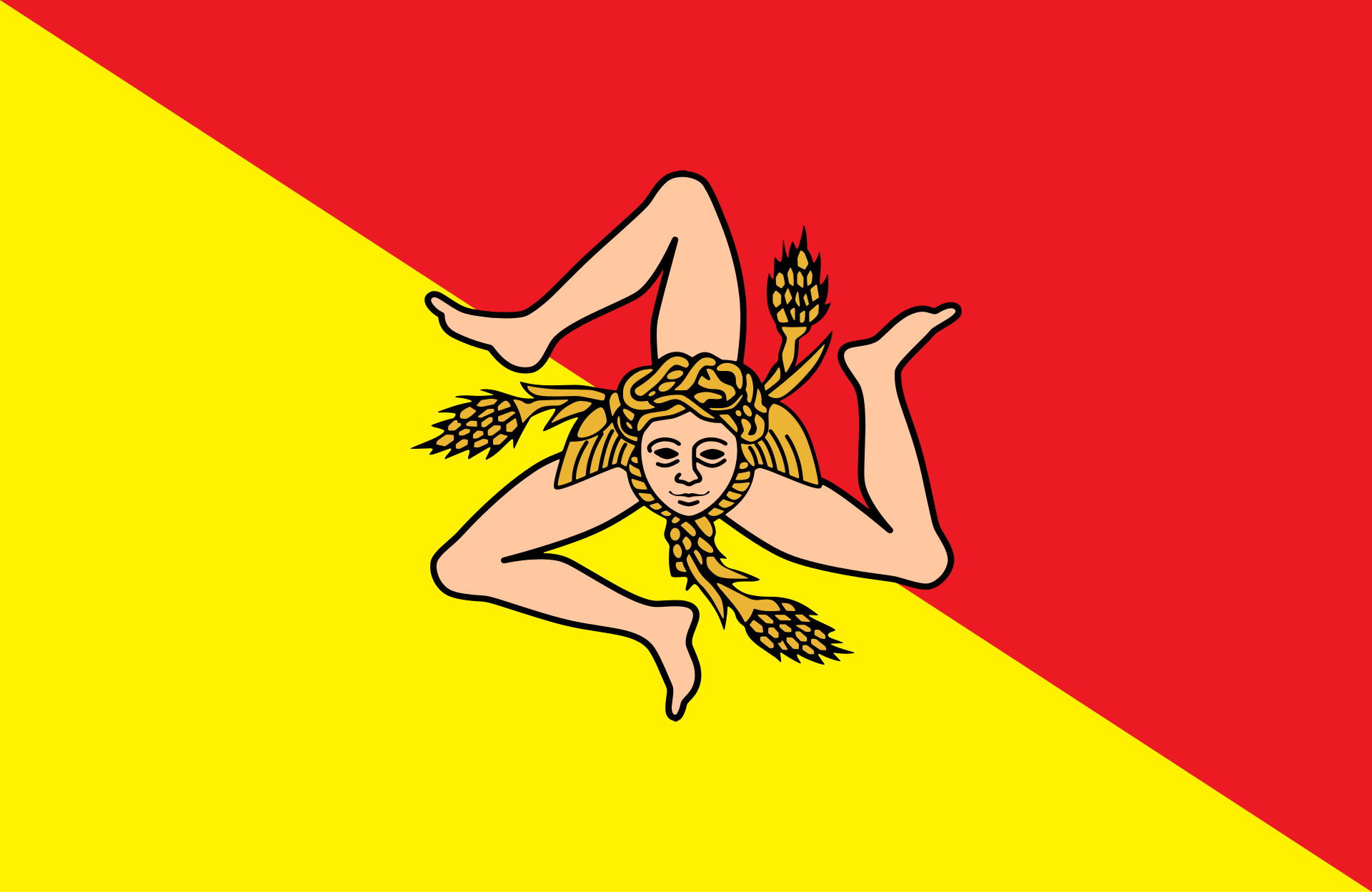


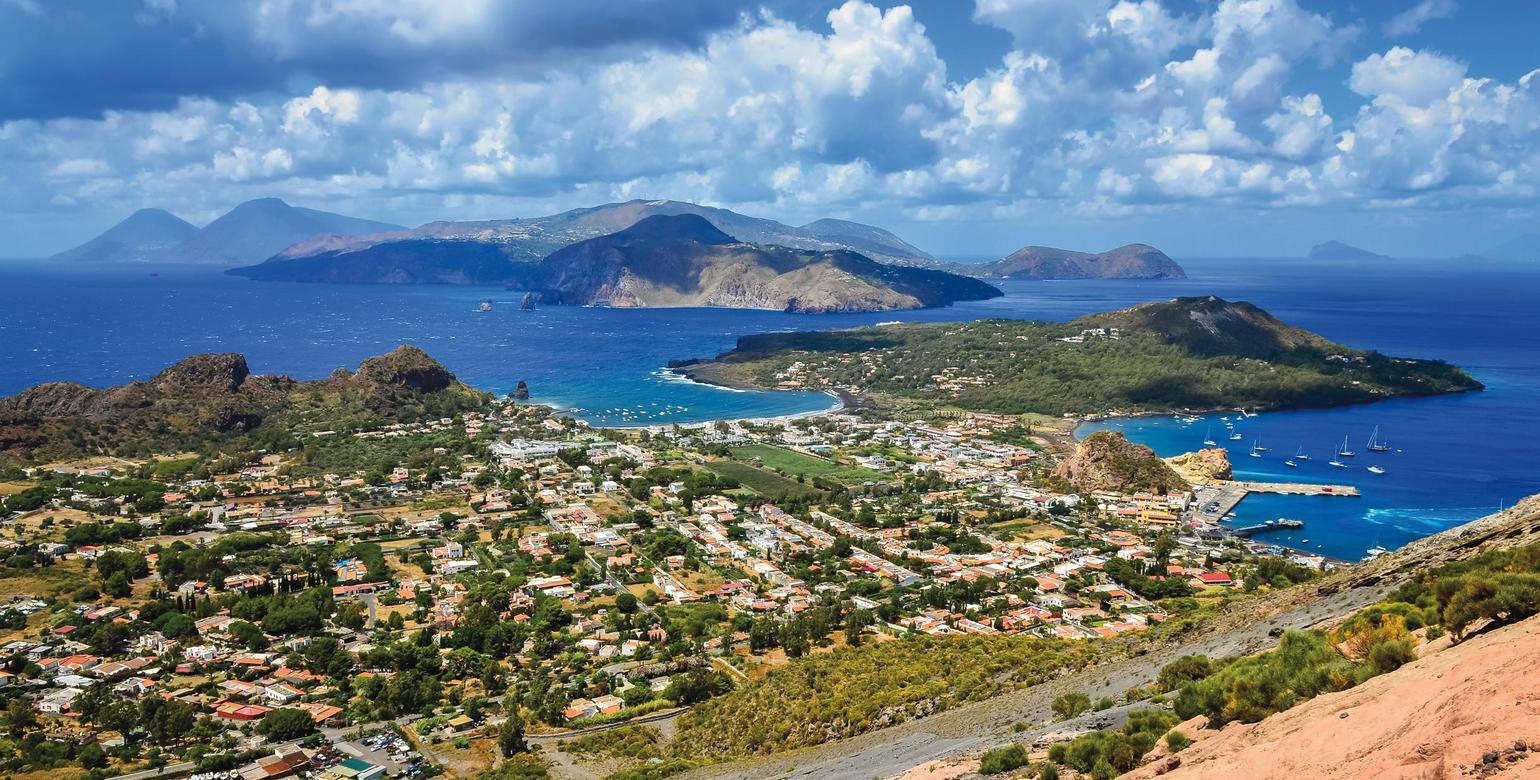
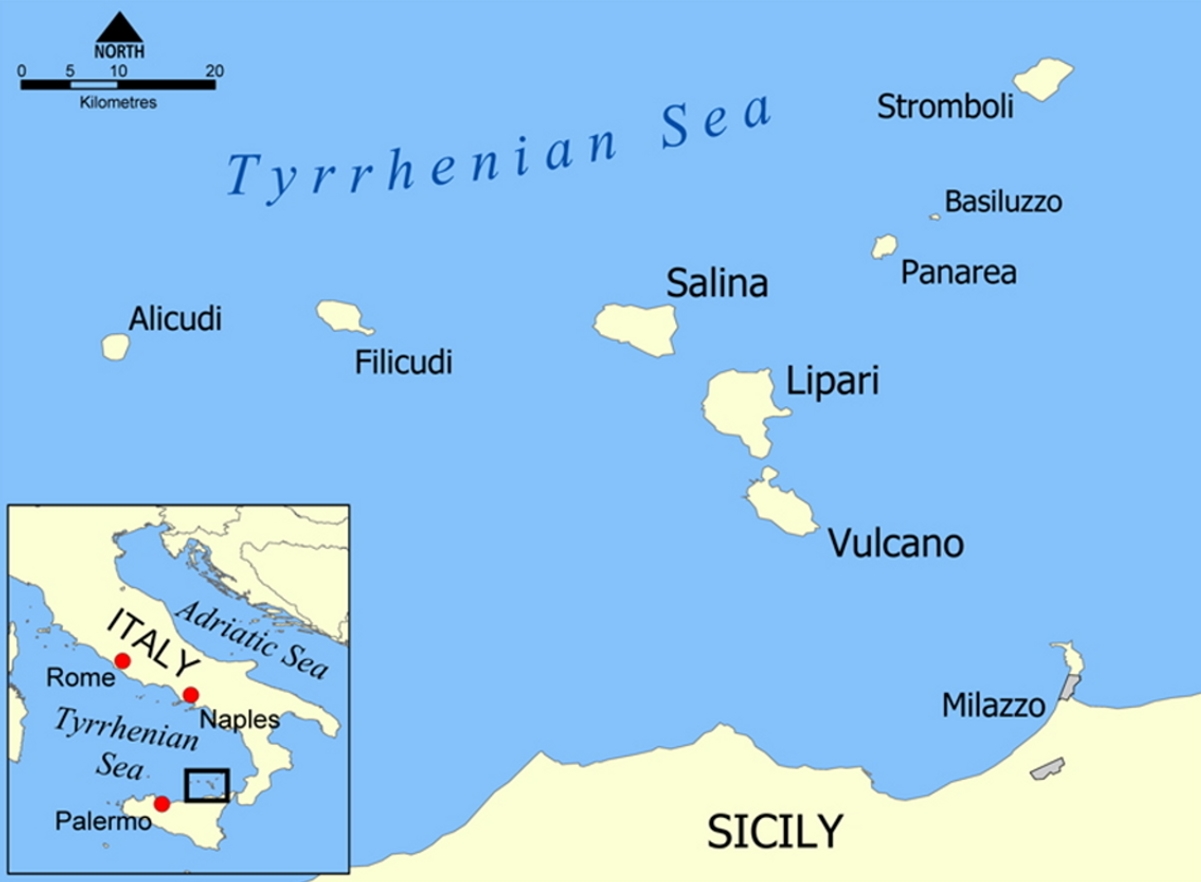
Die Liparischen Inseln oder auch Äolischen Inseln (italienisch Isole Lipari oder Isole Eolie) sind eine Inselgruppe im Tyrrhenischen Meer nördlich von Sizilien. Zur Inselgruppe mit einer Gesamtfläche von 115,4 km² zählen sieben bewohnte Inseln mit etwa 13.768 Einwohnern (Stand: 31. Dezember 2009), die zur italienischen Region Sizilien gehören.
Die Inseln sind vulkanischen Ursprungs und wurden 2000 von der UNESCO zum Weltnaturerbe erklärt mit der Begründung, „dass die vulkanischen Landschaften der Inseln klassische Gegenstände der fortdauernden Untersuchung der Vulkanologie weltweit darstellen. Durch ihre wissenschaftliche Erforschung zumindest vom 18. Jahrhundert an haben die Inseln den Lehrbüchern der Geologie und Vulkanologie zwei Arten von Eruptionen (Vulcano-Typ und Stromboli-Typ) geliefert und so für mehr als 200 Jahre eine wichtige Rolle bei der Ausbildung aller Geowissenschaftler gespielt. Sie bieten weiter ein reiches Feld für vulkanologische Untersuchungen fortdauernder geologischer Prozesse bei der Bildung von Landschaften.“[1]
埃奥利群岛(意大利语:Isole Eolie,西西里语:Ìsuli Eoli),又名利帕里群岛(意大利语:Isole Lipari),是位于西西里岛北侧第勒尼安海中的火山群岛,得名于半神半人的风神埃俄罗斯[1]。埃奥利群岛在夏季是一个热门的旅游目的地,每年吸引游客多达20万。
埃奥利群岛中最大的岛屿是利帕里岛,此外还有武尔卡诺岛、萨利纳岛、斯特龙博利岛、菲利库迪岛、阿利库迪岛、帕纳雷阿岛和巴西卢佐岛。
埃奥利群岛是斯特朗博利型火山喷发和武尔卡诺型火山喷发两个火山学词语的起源地,因此被列为世界遗产,也被列入受到威胁的名单[2]。

大希腊(希腊语:Μεγάλη Ἑλλάς)是指公元前8世纪到公元前6世纪,古希腊人在安纳托利亚、北非以及南欧的意大利半岛南部建立一系列殖民城邦的总称。这其中最著名的当属安纳托利亚的艾菲斯以及地中海岛屿的城邦,例如意大利的他林敦。
大希腊的诸城邦经常与周围意大利半岛各部族发生战争,另外,他们彼此之间也常有战争。公元前4世纪和前3世纪之交,大希腊诸城邦遭到西西里岛城邦叙拉古的僭主大狄奥尼西奥斯统治。公元前282年,他林敦与罗马共和国发生战争,伊庇鲁斯国王皮洛士应他林敦人要求支援。但是他林敦在皮洛士离开后在公元前272年落入罗马人之手,至此大希腊的所有城邦陆续为罗马人占领。
大希腊在文学、艺术、建筑等方面对罗马文化发展有着重大影响。大希腊拥有发达的农业、手工业和商业,同时也是著名哲学家芝诺、巴门尼德、毕达哥拉斯等人主要的活动场所。
Als Magna Graecia (lateinisch für: „großes Griechenland“; altgriechisch Μεγάλη Ἑλλάς Megalē Hellas) werden die Regionen im antiken Süditalien, oft einschließlich Siziliens, bezeichnet, die von griechischen Siedlern ab dem 8. Jahrhundert v. Chr. kolonisiert wurden. Obwohl es hier neben den zahlreichen Poleis immer auch viele nichtgriechische Stämme und Städte gab, war die ganze Region dennoch stark von der griechischen Sprache und Kultur geprägt und wurde erst spät und langsam romanisiert. Noch heute gibt es kleine griechische Sprachinseln in Süditalien („Griko“, siehe unten). Die Griechen Italiens wurden auch als Italioten (Ἰταλιῶται Italiōtai) bezeichnet.
Im Deutschen wird das Gebiet auch Großgriechenland genannt, seine Einwohner Westgriechen. Die Magna Graecia bestand dabei aus vielen volkreichen Städten; diese waren unabhängige Staaten, die oft gegeneinander kämpften.[1] Teils schlossen sich westgriechische Poleis aber auch zu Koina zusammen, so insbesondere zum Italiotenbund unter Führung von Tarent.
Erstmals findet sich die Bezeichnung Großgriechenland für das Gebiet von Neapel bis Syrakus bei Polybios.[2] Auch für Strabon zählte Sizilien zu Großgriechenland.[3] Plinius der Ältere und Servius grenzten hingegen das Gebiet der Magna Graecia von Lokroi bis Tarent bzw. von Cumae/Kyme bis Tarent ein, zählten also Sizilien nicht dazu. Betrachtet man die Ausdehnung der hellenischen Besiedlung, Sprache und Kultur, erstreckte sich das Gebiet der Westgriechen von der Umgebung Neapels bis nach Sizilien.


Messina (in der Antike ursprünglich altgriechisch Ζάγκλη Zanklē, dann Μεσσήνη Messēnē, lateinisch Messana) ist mit 221.246 Einwohnern (Stand 31. Dezember 2022) die drittgrößte Stadt in der italienischen Region Sizilien und zugleich Verwaltungssitz der Metropolitanstadt Messina. Wegen der Nähe zum italienischen Festland wird Messina auch das Tor Siziliens genannt.
Im Lauf seiner Geschichte erlebte Messina nicht nur unter den wechselnden Herrschern Blütezeiten und Zerstörungen. Schwere Erdbeben in den Jahren 1783 und 1908 sowie die Bombenangriffe im Zweiten Weltkrieg zerstörten immer wieder große Teile der Stadt. Heute ist Messina eines der wirtschaftlichen und kulturellen Zentren Siziliens.
墨西拿(意大利语:Messina)是意大利西西里岛上第三大的城市,也是墨西拿广域市的首府。墨西拿在西西里岛的东北角,正对墨西拿海峡。
墨西拿为古代来自希腊麦西尼亚的殖民者于公元前8世记时为了逃避当时征服麦西尼亚的斯巴达人统治而建立,古称梅萨纳(Messana),又译梅西那或麦散那,距今有二千八百多年历史。
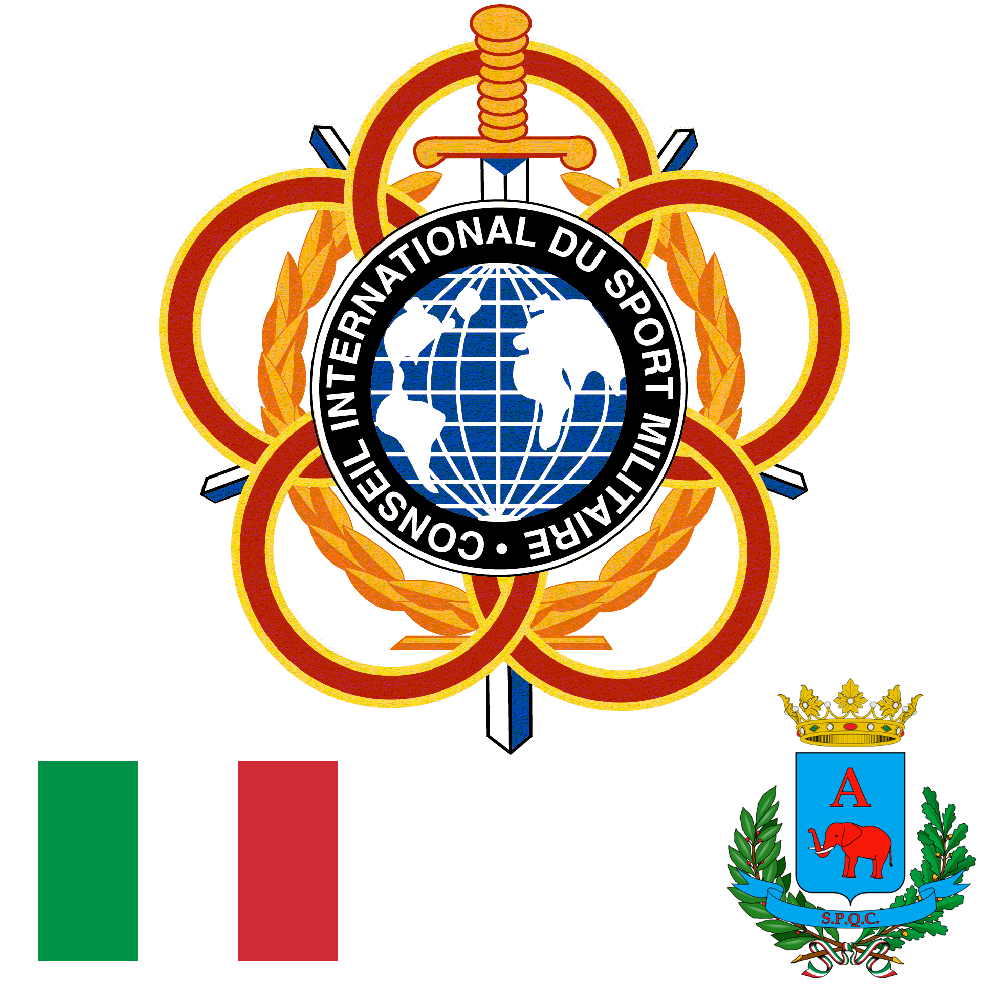



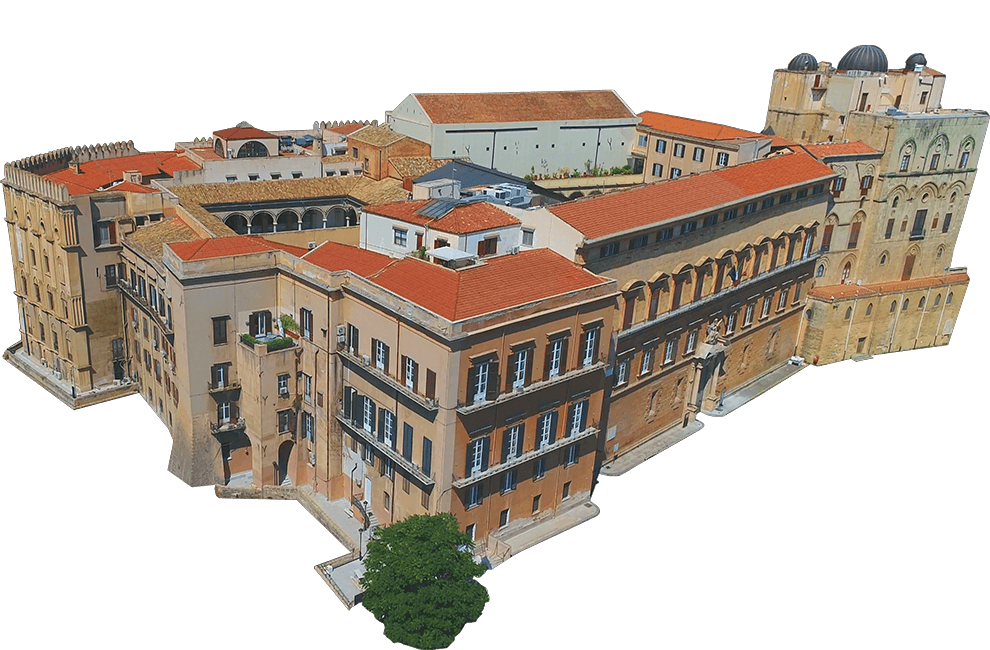
Der Palazzo dei Normanni („Normannenpalast“), auch Palazzo Reale („königlicher Palast“) genannt, ist ein Schloss in Palermo. Der Palast steht an der höchsten Stelle des mittelalterlichen Stadtgebiets.
诺曼王宫(意大利语:Palazzo dei Normanni)是意大利南部西西里首府巴勒莫的一座宫殿,它是自诺曼征服时期以后西西里国王的主要驻地,现在则是西西里议会的所在地。该建筑是欧洲最古老的王宫。

巴勒莫(意大利语:Palermo),位于意大利西西里岛西北部,是西西里岛的首府,人口约130万,面积4992平方千米。
巴勒莫早于八千年前已有人聚居。公元前734年腓尼基人来到巴勒莫,在此建立港口。由于巴勒莫本身属天然良港,古希腊人曾为此开战,最终于公元前276年沦为希腊人殖民地。罗马帝国时期巴勒莫一度是古罗马帝国一部分。
在古代历史,巴勒莫的重要性都仅次于叙拉古或特拉帕尼等城市;中世纪后,拜占庭帝国派驻的总督常住于此已成定例;830年阿拉伯人入侵对巴勒莫展开围城战,长达一年的时间毫无援军援助,831年9月拜占庭的西西里总督与主教潜逃失败而丧生,巴拉摩在这种状况下陷落,这场战役人口从七万人减少至三千人,为了让城市重现生机阿拉伯人派驻地方长官统治。[1]1130年鲁杰罗二世于西西里岛创立西西里王国。王国把巴勒莫作为首都,众多建设也不断进行,包括兴建巴勒莫主教座堂。巴勒莫是于1861年意大利统一时落入意大利手中。工业也在随后开始发展,城市也向北扩张。
Palermo (sizilianisch Paliemmu) ist die Hauptstadt der Autonomen Region Sizilien und der Metropolitanstadt Palermo. Sie liegt an einer Bucht an der Nordküste Siziliens. Im 8. Jahrhundert v. Chr. gegründet, erlebte die Stadt vor allem unter der Vorherrschaft der Araber sowie der Normannen und der Staufer eine Blütezeit. Palermo war u. a. Residenzstadt von Friedrich II.
Heute ist Palermo mit 668.405 Einwohnern (Stand 31. Dezember 2017) Italiens fünftgrößte Stadt und das politische sowie kulturelle Zentrum Siziliens.
パレルモ(イタリア語: Palermo (![]() 音声ファイル))は、イタリアのシチリア島北西部に位置する都市であり、その周辺地域を含む人口約68万人の基礎自治体(コムーネ)。シチリア島最大の都市にしてシチリア州の州都であり、パレルモ県の県都でもある[4]。独自の国際色豊かな文化を生み出した中世シチリア王国の古都。
音声ファイル))は、イタリアのシチリア島北西部に位置する都市であり、その周辺地域を含む人口約68万人の基礎自治体(コムーネ)。シチリア島最大の都市にしてシチリア州の州都であり、パレルモ県の県都でもある[4]。独自の国際色豊かな文化を生み出した中世シチリア王国の古都。
Palermo (Italian: [paˈlɛrmo] ( listen); Sicilian: Palermu; Latin: Panormus, from Greek: Πάνορμος, translit. Pánormos) is a city of Southern Italy, the capital of both the autonomous region of Sicily and the Metropolitan City of Palermo. The city is noted for its history, culture, architecture and gastronomy, playing an important role throughout much of its existence; it is over 2,700 years old. Palermo is located in the northwest of the island of Sicily, right by the Gulf of Palermo in the Tyrrhenian Sea.
listen); Sicilian: Palermu; Latin: Panormus, from Greek: Πάνορμος, translit. Pánormos) is a city of Southern Italy, the capital of both the autonomous region of Sicily and the Metropolitan City of Palermo. The city is noted for its history, culture, architecture and gastronomy, playing an important role throughout much of its existence; it is over 2,700 years old. Palermo is located in the northwest of the island of Sicily, right by the Gulf of Palermo in the Tyrrhenian Sea.
The city was founded in 734 BC by the Phoenicians as Ziz. Palermo then became a possession of Carthage. Two Greek colonies were established, known collectively as Panormos or "All-Port"; the Carthaginians used this name on their coins after the 5th century BC. As Panormus, the town became part of the Roman Republic and Empire for over a thousand years. From 831 to 1072 the city was under Arab rule during the Emirate of Sicily when the city first became a capital. The Arabs shifted the Greek name into Bal'harm[1][2] (Arabic: بَلَرْم), the root for Palermo's present-day name. Following the Norman reconquest, Palermo became the capital of a new kingdom (from 1130 to 1816), the Kingdom of Sicily and the capital of the Holy Roman Empire under Emperor Frederick II and King Conrad IV.
The population of Palermo urban area is estimated by Eurostat to be 855,285, while its metropolitan area is the fifth most populated in Italy with around 1.2 million people. In the central area, the city has a population of around 676,000 people. The inhabitants are known as Palermitani or, poetically, panormiti. The languages spoken by its inhabitants are the Italian language and the Palermitano dialect of the Sicilian language.
Palermo is Sicily's cultural, economic and tourism capital. It is a city rich in history, culture, art, music and food. Numerous tourists are attracted to the city for its good Mediterranean weather, its renowned gastronomy and restaurants, its Romanesque, Gothic and Baroque churches, palaces and buildings, and its nightlife and music.[3] Palermo is the main Sicilian industrial and commercial center: the main industrial sectors include tourism, services, commerce and agriculture.[4] Palermo currently has an international airport, and a significant underground economy.[citation needed] In fact, for cultural, artistic and economic reasons, Palermo was one of the largest cities in the Mediterranean and is now among the top tourist destinations in both Italy and Europe. It is the main seat of the UNESCO World Heritage Site Arab-Norman Palermo and the Cathedral Churches of Cefalù and Monreale. The city is also going through careful redevelopment, preparing to become one of the major cities of the Euro-Mediterranean area.[5]
Roman Catholicism is highly important in Palermitano culture. The Patron Saint of Palermo is Santa Rosalia whose Feast Day is celebrated on 15 July. The area attracts significant numbers of tourists each year and is widely known for its colourful fruit, vegetable and fish markets at the heart of Palermo, known as Vucciria, Ballarò and Capo.[6]
Palerme [palɛʁm]2 (en italien : Palermo [paˈlɛrmo]3 Écouter, en sicilien :Palermu) est une ville italienne, chef-lieu et plus grande ville de la région Sicile avec environ 650 000 habitants, et formant avec ses banlieues une unité urbaine d'environ 1 million d'habitants. Elle se situe dans une baie sur la côte nord de l'île.
En 1962, la ville a été récompensée par le Prix de l'Europe.
Palermo (AFI: [paˈlɛrmo][5] ascolta[?·info]; Palermu [paˈlɛmmʊ] in siciliano, Paliemmu in dialetto palermitano[6]) è un comune italiano di 664 182 abitanti[3], capoluogo dell'omonima città metropolitana e della Regione siciliana.
È il quinto comune italiano per popolazione nonché il principale centro urbano dell'isola di Sicilia e dell'Italia insulare, secondo nel Mezzogiorno d'Italia e trentesimo a livello europeo.
La città vanta una storia plurimillenaria e ha avuto un ruolo importante per le vicende del Mediterraneo e dell'Europa. Fondata dai Fenici tra il VII e il VI secolo a.C.[7], viene conquistata nel 254 a.C. dai Romani ed è divenuta il principale centro dell'isola (Provincia Sicilia)[8]. Conquistata dai Vandali nel 429, passa nel 536 sotto Bisanzio e poi inesorabilmente conquistata dai Saraceni nell'831. Successivamente, con l'avvento dei Normanni e il ritorno alla cristianità, fu la città di incoronazione per i numerosi sovrani di Sicilia, proprio a questa circostanza si devono i titoli attribuiti alla città: «Prima Sedes, Corona Regis et Regni Caput». Da allora è rimasta, con alterne vicende, la capitale del Regno di Sicilia fino al 1816. Particolarmente importanti furono i Vespri siciliani, ribellione scoppiata a Palermo nel 1282.
Dal 1816 al 1817 fu capitale provvisoria del neonato Regno delle Due Sicilie e successivamente divenne la seconda città per importanza dello stesso regno duo-siciliano, fino al 1861, anno dell'unità d'Italia.
La lunga storia della città e il succedersi di numerose civiltà e popoli le hanno regalato un notevole patrimonio artistico e architettonico. Il sito seriale Palermo arabo-normanna e le cattedrali di Cefalù e Monreale, di cui fanno parte più beni monumentali situati in città, nel 2015 è stato dichiarato Patrimonio dell'umanità dall'Unesco.[9][10] Numerosi edifici, tra chiese e palazzi, sono riconosciuti monumenti nazionali italiani.
A Palermo ha sede l'Assemblea regionale siciliana, la più antica sede parlamentare in attività del mondo[11][12], nonché una rilevante sede universitaria. La sua arcidiocesi è sede metropolitana e sede del primate di Sicilia[13]. Nominata Capitale Italiana dei Giovani 2017, è altresì capitale italiana della cultura per il 2018.[14]
Palermo (AFI: [paˈlɛrmo], en siciliano: Palemmu [paˈlɛmmʊ], en el dialecto local: Paliemmu [paˈljæmmʊ]) es una ciudad capital de la región autónoma de Sicilia y de la Ciudad metropolitana de Palermo. En ella habitan 860 000 personas (2016) y en su aglomeración urbana cuenta con cerca de 980 000, cifra que aumenta hasta 1 500 135 habitantes en toda su área metropolitana (la quinta más poblada de Italia).
Su historia milenaria le ha dotado de un considerable patrimonio artístico y arquitectónico que abarca desde restos púnicos hasta casas de estilo Art Nouveau, pasando por residencias de estilo árabe y normando, iglesias barrocas y teatros neoclásicos. Para actividades culturales, artísticas y económicas fue una de las ciudades más grandes del Mediterráneo y hoy es un apreciado destino estival para el turista que visita tierras italianas.2
En julio de 2015, el conjunto «Palermo árabe-normando y las catedrales de Cefalú y Monreale» fue incluido en la lista del patrimonio de la Humanidad por la Unesco.3
Пале́рмо (др.-греч. Πάνορμος, лат. Panormus, итал. Palermo [paˈlɛrmo]  слушать, сиц. Palermu) — административный центр одноимённой провинции, расположенной в Италии.
слушать, сиц. Palermu) — административный центр одноимённой провинции, расположенной в Италии.
Покровителем города считается св. Розалия. Праздник города — 15 июля.
 Royalty
Royalty
 History
History

 Geography
Geography
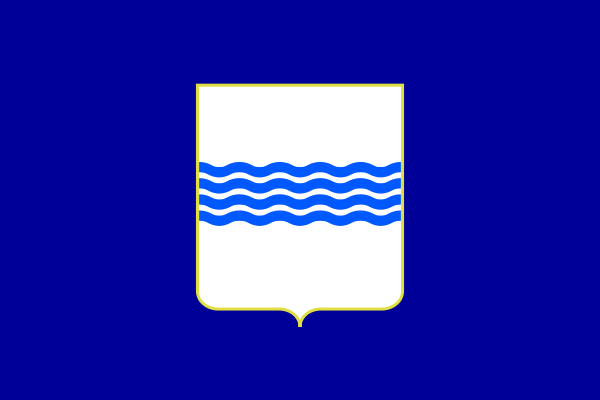 Basilicata
Basilicata
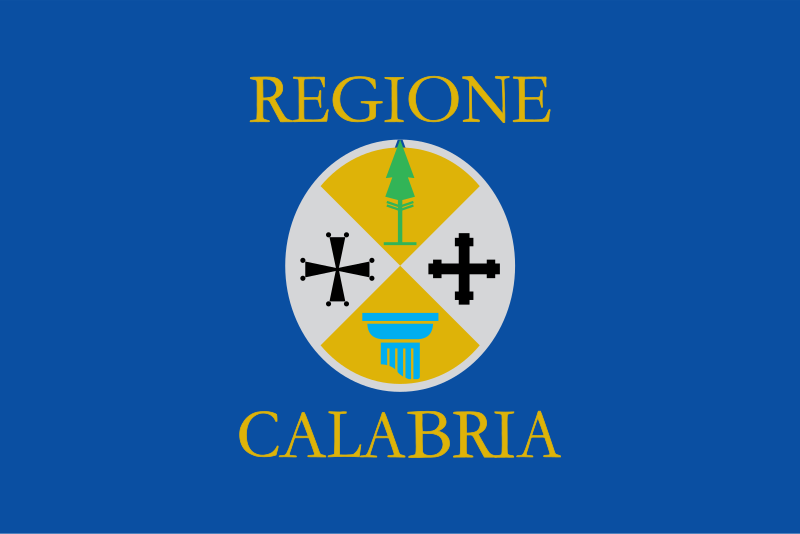 Calabria
Calabria
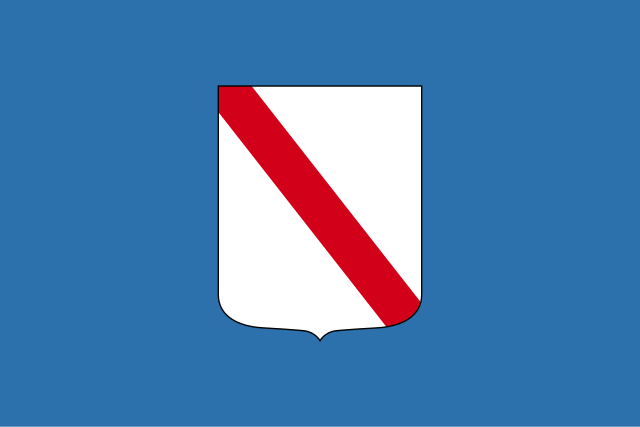 Campania
Campania
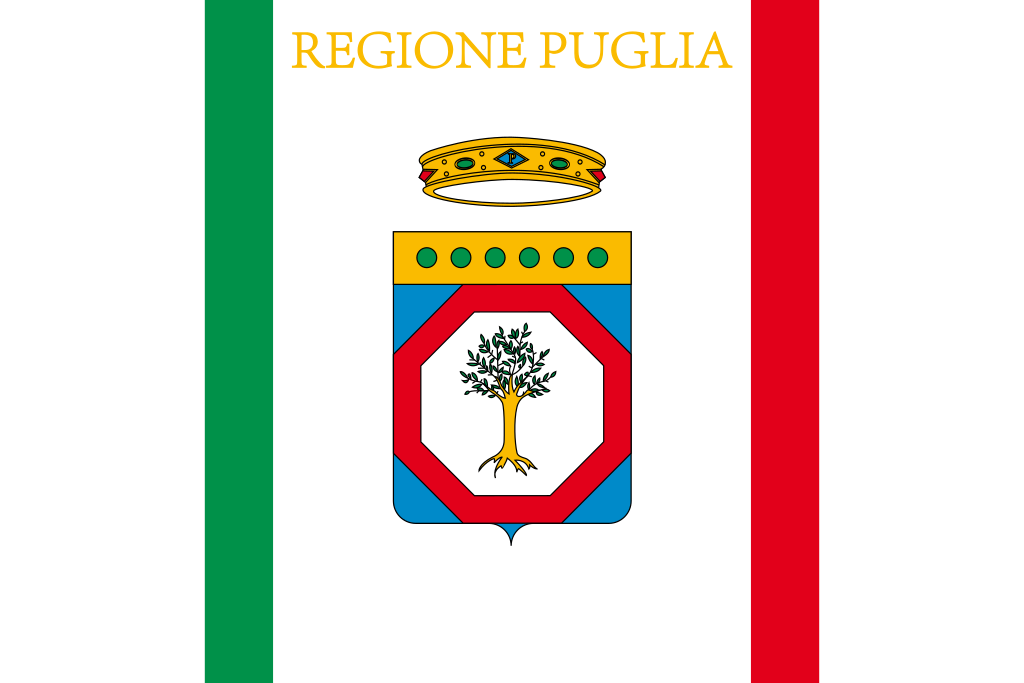 Puglia
Puglia
 Eat and Drink
Eat and Drink
 International cities
International cities
 Sport
Sport
 World Heritage
World Heritage
 Architecture
Architecture
 Important port
Important port